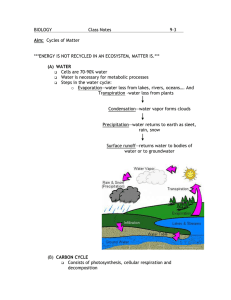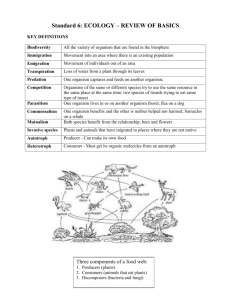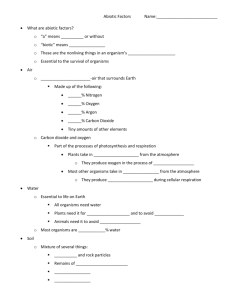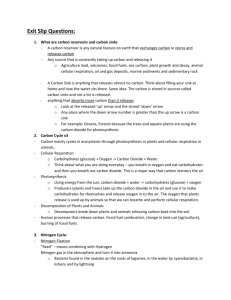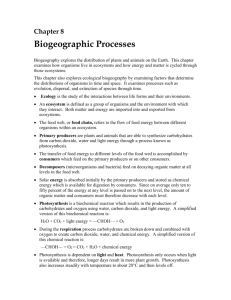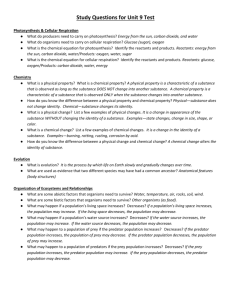Carbon & Nitrogen Cycle Notes
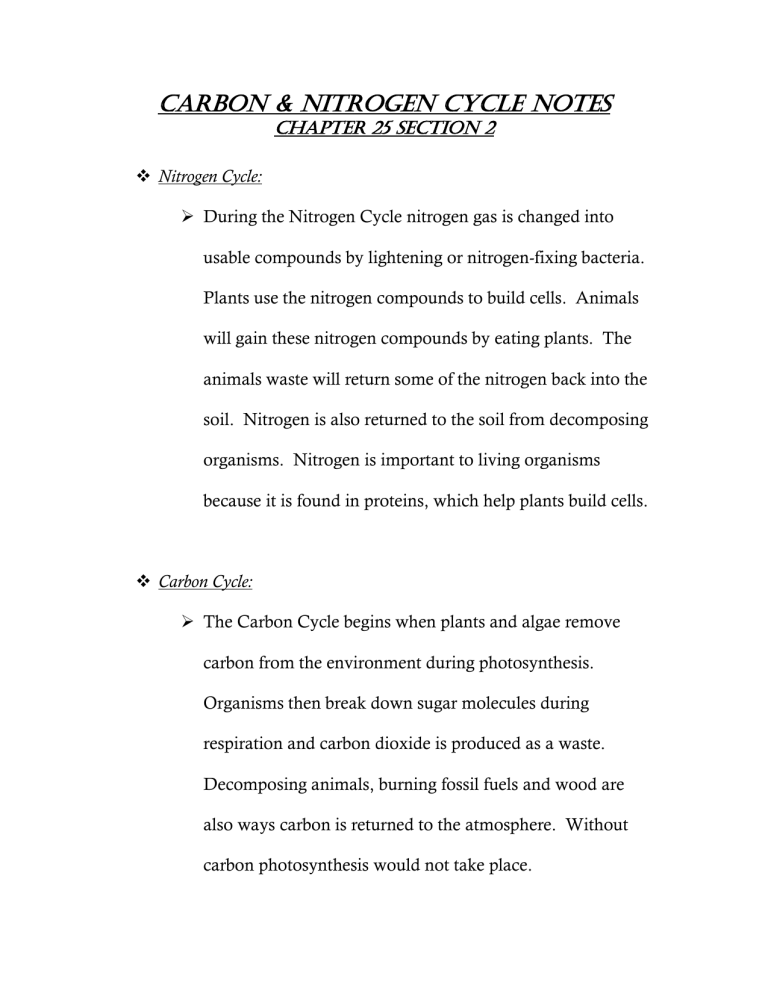
Carbon & Nitrogen Cycle Notes
Chapter 25 Section 2
Nitrogen Cycle:
During the Nitrogen Cycle nitrogen gas is changed into usable compounds by lightening or nitrogen-fixing bacteria.
Plants use the nitrogen compounds to build cells. Animals will gain these nitrogen compounds by eating plants. The animals waste will return some of the nitrogen back into the soil. Nitrogen is also returned to the soil from decomposing organisms. Nitrogen is important to living organisms because it is found in proteins, which help plants build cells.
Carbon Cycle:
The Carbon Cycle begins when plants and algae remove carbon from the environment during photosynthesis.
Organisms then break down sugar molecules during respiration and carbon dioxide is produced as a waste.
Decomposing animals, burning fossil fuels and wood are also ways carbon is returned to the atmosphere. Without carbon photosynthesis would not take place.
In the carbon cycle materials are recycled when decaying organisms release carbon molecules back into the soil. This carbon can be returned to the atmosphere when fossil fuels are used or when wood is burned. An organisms waste and respiration also releases carbon back into the atmosphere and soil. As forest are destroyed and more fossil fuels are used an over abundance of carbon dioxide is being released into the atmosphere. This will result in Global Warming, in which carbon dioxide traps the suns heat causing average temperatures to rise.
Importance of Photosynthesis & Respiration in the Carbon
& Nitrogen Cycles:
Carbon Cycle- Plants use carbon dioxide during photosynthesis, which produces oxygen and glucose that living organisms need to survive. Carbon dioxide is a compound of carbon. Respiration would not be possible without the products of photosynthesis.
Plants obtain carbon from the atmosphere by taking it in through their stomata and roots.
Nitrogen Cycle- Without photosynthesis there would be no nitrogen-fixing bacteria or need for building cells, because there would be no living organisms.
